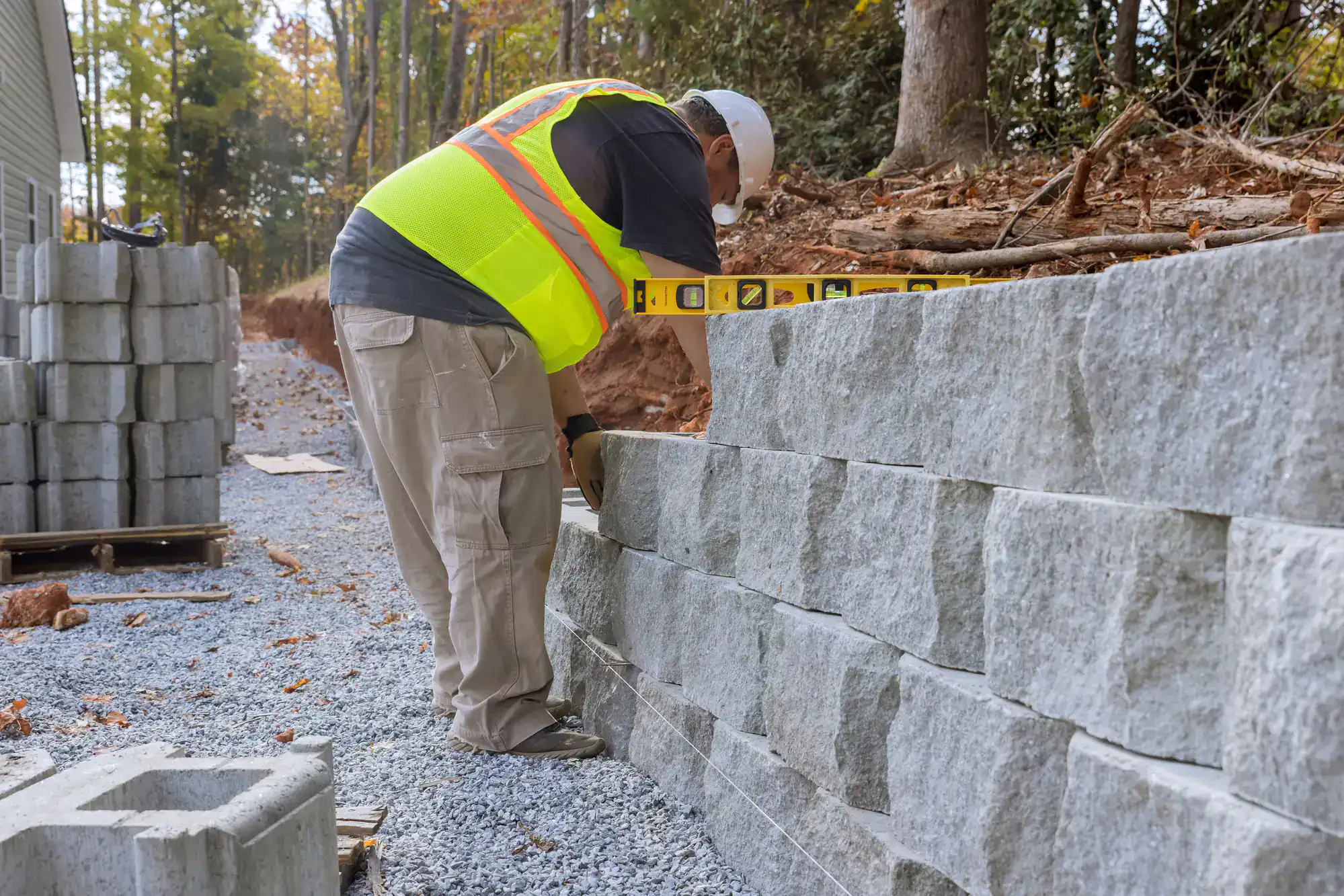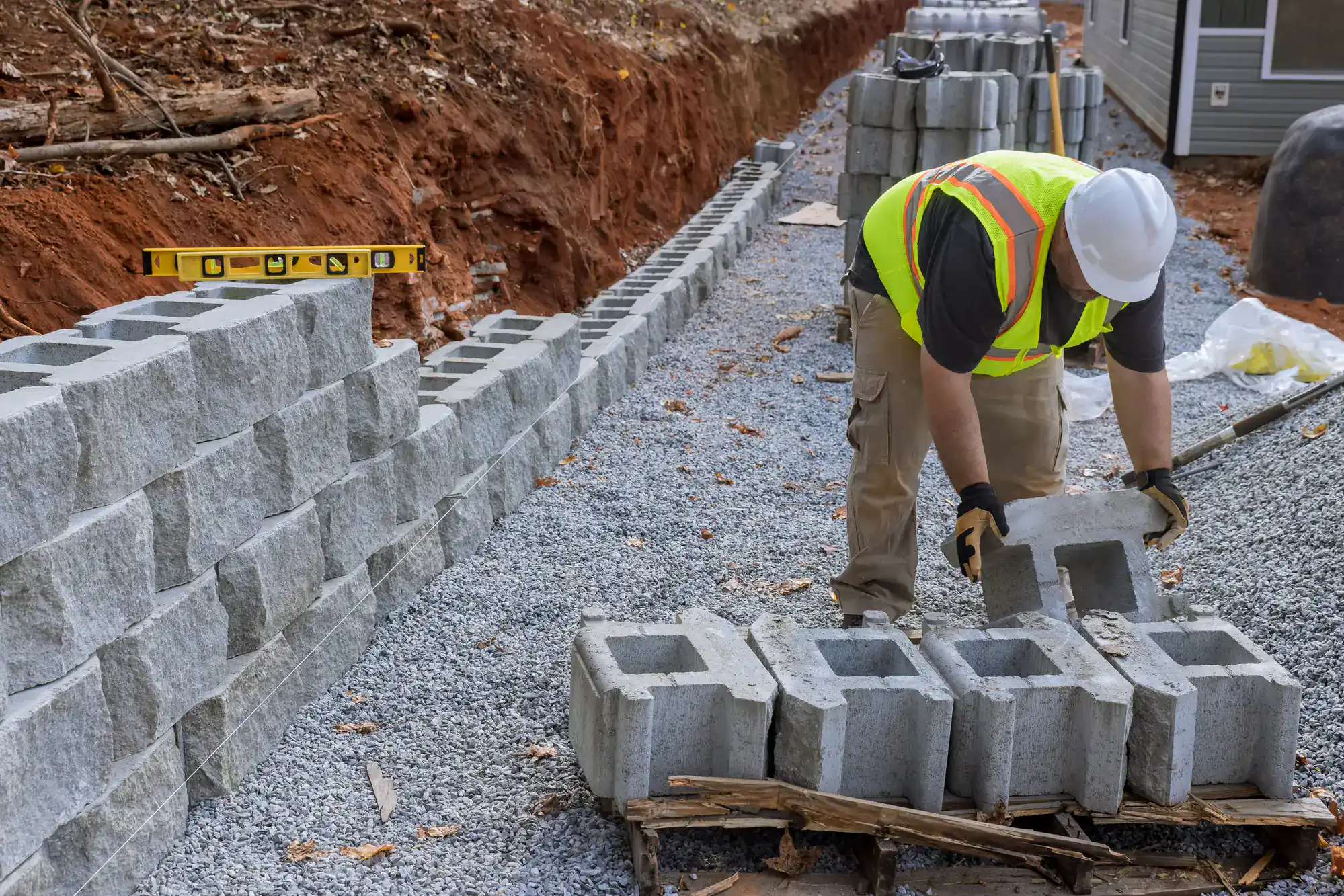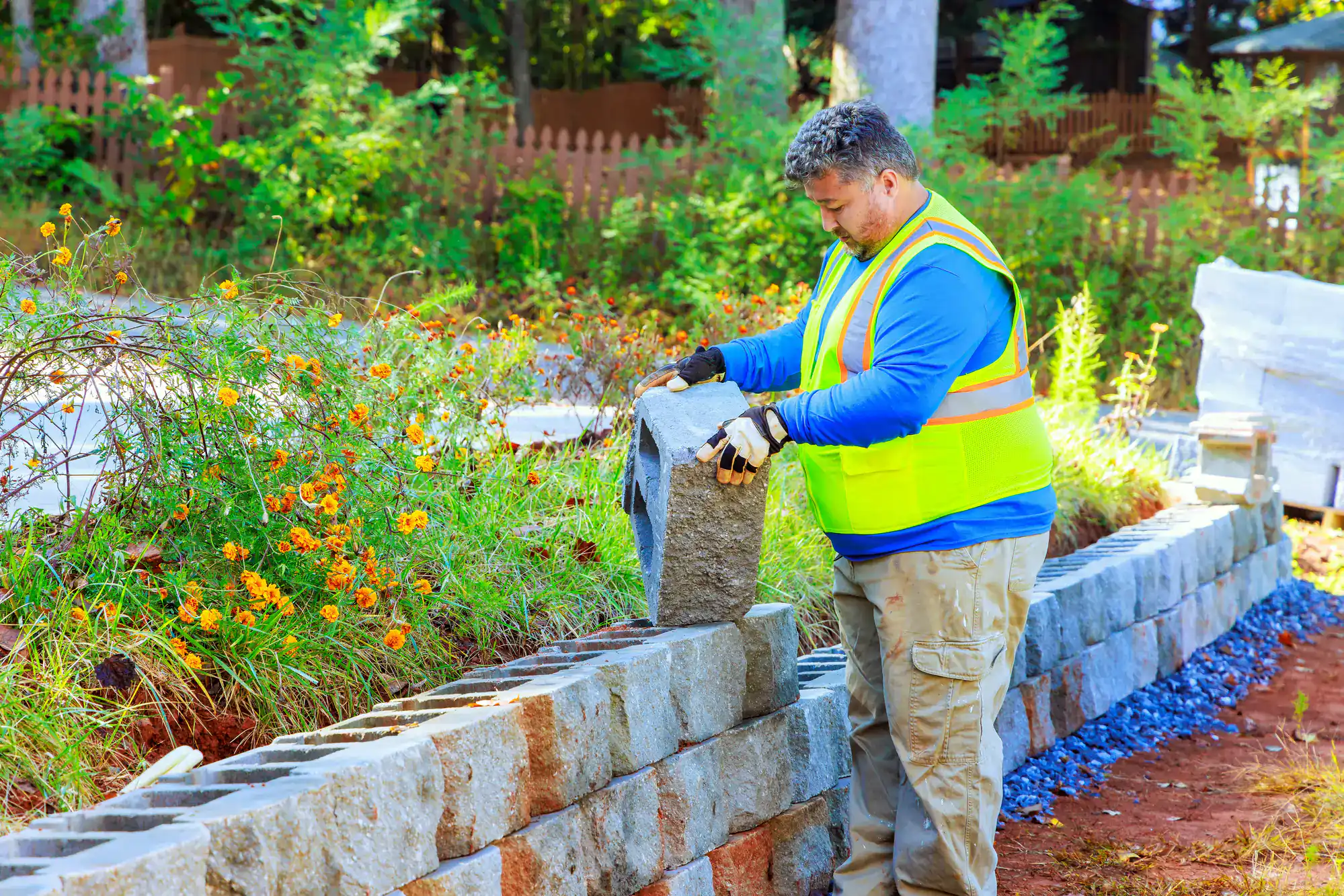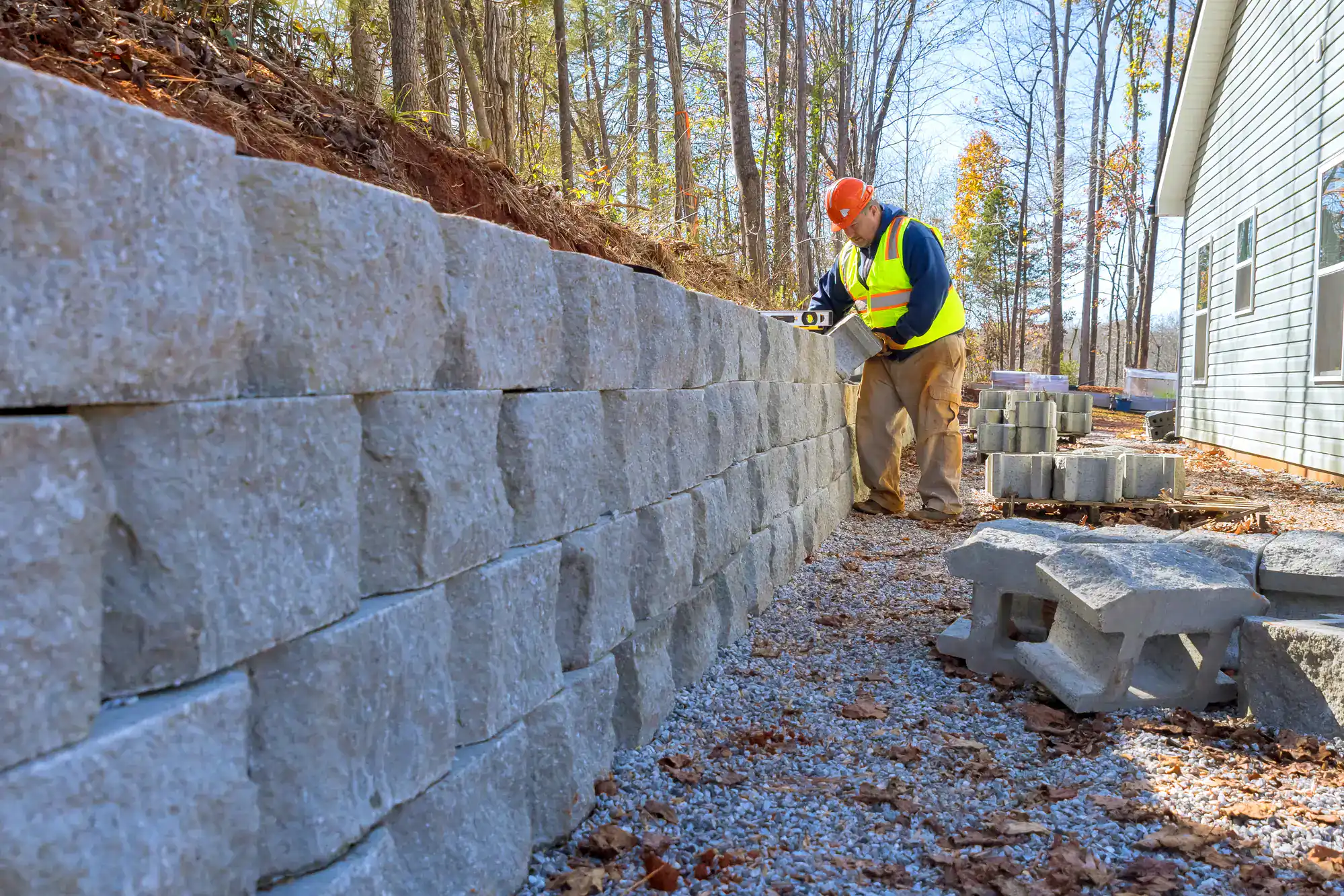

Your sloped yard isn’t just an eyesore—it’s a liability waiting to happen. Every heavy rain washes away more soil, threatens your foundation, and limits what you can do with your outdoor space.
A properly built retaining wall changes everything. You get flat, usable areas where there used to be unusable hills. Your landscaping stays put instead of sliding away. Water flows where it should instead of pooling against your foundation.
The result? More functional outdoor space, better drainage, and protection that actually works when Crystal River’s storms hit hardest.
Since 1995, Mainstreet Landscaping has been Crystal River’s go-to retaining wall contractor. We’ve seen what works and what fails in Citrus County’s unique soil and weather conditions.
As authorized contractors for Tremron, Flagstone, and Belgard, we use materials that stand up to Florida’s challenges. Our family-owned approach means you work directly with people who care about getting it right the first time.
We understand Crystal River’s permit requirements, soil conditions, and drainage challenges better than contractors from outside the area. That local knowledge makes the difference between a wall that lasts decades and one that fails in the first big storm.

Every retaining wall project starts with understanding your specific drainage and soil challenges. We assess the slope, check soil conditions, and determine what permits you’ll need for Crystal River requirements.
Next comes proper excavation and foundation preparation. This isn’t just digging a trench—it’s creating a base that can handle tons of soil pressure and Florida’s heavy rains. We install proper drainage systems to prevent water buildup that causes most wall failures.
The wall construction uses interlocking blocks or poured concrete, depending on your needs and budget. Each course gets properly leveled and secured. Finally, we backfill with proper drainage material and compact everything to prevent settling that leads to cracks and failures down the road.

Ready to get started?
Crystal River properties face specific challenges that out-of-town contractors often miss. The sandy soil drains well but erodes easily. Summer storms bring intense rainfall that tests every drainage system. Proximity to waterways adds extra pressure during storm surges.
We design every wall for these local conditions. We use proper drainage behind every wall to handle Crystal River’s 54+ inches of annual rainfall. Our material choices account for the soil composition and water table variations common in Citrus County.
Whether you need a decorative garden wall or a major slope stabilization system, we handle the engineering requirements and permit process. Walls over 4 feet require professional engineering—something we coordinate so you don’t have to navigate city requirements alone.

Retaining wall costs in Crystal River typically range from $20-50 per square foot, depending on height, materials, and site conditions. A basic 50-foot decorative wall might cost $4,000-6,000, while larger structural walls can reach $15,000 or more.
Several factors affect your final cost. Wall height is the biggest variable—taller walls require more materials, stronger foundations, and often engineering approval. Site access matters too. If equipment can’t reach your backyard easily, labor costs increase.
The biggest cost factor most homeowners don’t expect? Permits and engineering. Crystal River requires permits for walls over 12 inches tall, and walls over 4 feet need professional engineering. These requirements can add $2,000-4,000 to your project before construction even starts.
Concrete block retaining walls perform best in Crystal River’s conditions. They handle the sandy soil, resist erosion from heavy rains, and last 50-100 years with minimal maintenance. Natural stone looks great but costs significantly more, while wood walls deteriorate quickly in Florida’s humidity.
Segmental retaining wall blocks are the most popular choice for residential projects. These interlocking concrete blocks don’t require mortar, making them less likely to crack during soil movement. They come in various colors and textures to match your landscape design.
For walls over 4 feet or areas with poor drainage, poured concrete walls offer maximum strength. They cost more upfront but provide the structural integrity needed for challenging sites. The key is matching the wall type to your specific soil conditions and drainage requirements.
Yes, Crystal River requires permits for retaining walls taller than 12 inches. Walls 4 feet or higher also need professional engineering drawings to ensure they meet safety codes. The permit process typically takes 2-4 weeks and costs $200-500 depending on wall size.
Don’t skip the permit process to save money. Unpermitted walls can cause problems when you sell your home, and insurance may not cover damage from improperly built walls. The permit ensures your wall meets local building codes for wind resistance and drainage.
A qualified contractor should handle the permit application for you. We know Crystal River’s specific requirements and can navigate the approval process efficiently. This saves you time and ensures all paperwork gets submitted correctly the first time.
Properly built concrete retaining walls last 50-100 years in Florida, even with intense sun, heavy rains, and hurricane conditions. The key is using the right materials and proper drainage systems that handle Florida’s unique weather challenges.
Wood retaining walls last only 10-20 years in Florida’s humidity before rot and termite damage require replacement. Natural stone walls can last centuries but cost significantly more upfront. Concrete blocks offer the best balance of durability and cost for most Crystal River homeowners.
The biggest threat to retaining wall longevity isn’t the weather—it’s poor drainage. Walls without proper drainage systems fail within 5-10 years as water pressure builds up behind them. That’s why every wall needs gravel backfill, drainage pipes, and weep holes to handle Florida’s intense rainfall.
Retaining walls help control water flow and reduce flooding risk, but they’re not a complete flood prevention solution. They redirect runoff away from your foundation and create level areas that drain better than steep slopes. However, major storm events may still cause flooding regardless of your retaining walls.
The key is designing walls with proper drainage systems. This includes French drains behind the wall, drainage pipes that carry water to safe areas, and gravel backfill that allows water to flow through rather than building pressure. These features significantly reduce flooding risk during normal rainfall.
For properties near waterways or low-lying areas, retaining walls work best as part of a comprehensive drainage plan. This might include additional French drains, regrading, or storm water management systems. We can assess your specific flooding risks and recommend the right combination of solutions.
Retaining walls hold back soil on dry land, while seawalls protect shoreline property from water erosion. If your Crystal River property borders a canal, river, or other waterway, you likely need a seawall rather than a traditional retaining wall. The construction methods and materials are completely different.
Seawalls must withstand constant water pressure, tidal changes, and wave action. They’re typically made of reinforced concrete, steel, or vinyl specifically designed for marine environments. Retaining walls handle soil pressure and rainfall but aren’t built to handle constant water contact.
Many waterfront properties need both types of walls. A seawall protects the shoreline, while retaining walls create usable space and prevent soil erosion on the inland portions of your property. The key is using the right type of wall for each specific application to ensure long-term performance.
Useful Links